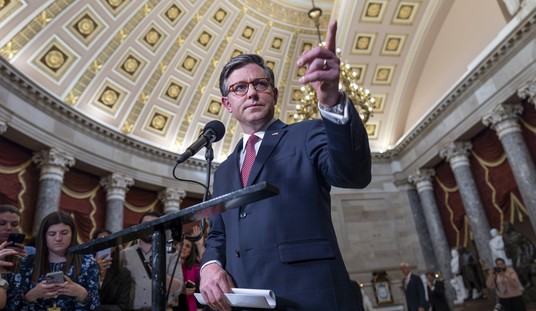
The justices of the U.S. Supreme Court gather for a formal group portrait to include the new Associate Justice, top row, far right, at the Supreme Court Building in Washington, Friday, Nov. 30, 2018. Seated from left: Associate Justice Stephen Breyer, Associate Justice Clarence Thomas, Chief Justice of the United States John G. Roberts, Associate Justice Ruth Bader Ginsburg and Associate Justice Samuel Alito Jr. Standing behind from left: Associate Justice Neil Gorsuch, Associate Justice Sonia Sotomayor, Associate Justice Elena Kagan and Associate Justice Brett M. Kavanaugh. (AP Photo/J. Scott Applewhite)
The March sitting of the Supreme Court for oral arguments lasts from March 23rd and runs through April 1st. There are eleven cases slated for oral argument. The following is a brief summary of each case.
United States vs. Briggs
The case involves the Uniform Code of Military Conduct and the statute of limitations for the offense of rape. Michael Briggs was an Air Force captain charged in 2014 with the 2005 rape of a member of his squadron. Although originally convicted, the charge was thrown out on appeal when the lower court determined that the 5-year statute of limitations that applied when the offense took place should have been enforced. The UCMC had been updated later to eliminate the statute of limitations.
US Patent and Trademark Office vs. Booking.com
The phrase “.com” is a frequently used one, and one we might call generic. Online hotel booking site Booking.com registered for a trademark with the words “.com.” The government denied the request citing the Lanham Act’s ban on registration of generic terms. The Fourth Circuit reversed that decision and the government appealed to the Supreme Court which must determine whether attaching the phrase “.com” to a business can be a protected trademark.
Google vs. Oracle
Basically another copyright case that asks whether such protections extend to a software interface. Enough said…
Tanvir vs. Tanzin
This is a case filed on behalf of unknown Muslim men who were placed on the “no fly” list after they refused to cooperate with FBI agents seeking information on other Muslim men. The petitioners are admittedly either US citizens or lawful permanent residents. They originally sued the government under the Religious Freedom Restoration Act which prohibits the government from placing a “substantial burden” on the exercise of religion. The District Court originally dismissed the case as they sought monetary damages, but the Appeals Court for the Second Circuit reinstated the case. Although the case asks whether the RFRA enables plaintiffs to seek monetary damages against individuals, the bigger question, to this writer, is what the hell does a terrorism investigation have to do with religion?
Carney vs. Adams
Delaware has a unique state constitutional provision that requires that judges on any of the state’s three highest courts be composed of no more than a bare majority of one political party with the remainder of the seats reserved for members of another political party. For example, if there are seven judges and four are Democrats, no more Democrats can be on the court and the other three must be from another political party. It is a strange provision which allegedly seeks to avoid highly partisan courts. Although it may have somewhat good intentions in this area, the question is whether it violates the First Amendment.
USAID vs. Alliance For Open Society International
In order to receive US federal aid to fight AIDS abroad, the government requires that the recipient of that aid adopt a written policy which explicitly opposes prostitution and sex trafficking. The Alliance, in this case, is an international organization based in the United States that challenged that requirement on First Amendment grounds previously in the Supreme Court and won. The Court stated that the requirement was compelled speech. This particular case asks whether the ban extends to legally distinct foreign entities that are affiliated with the US-based organization. In other words, do First Amendment protections reach across the oceans?
Torres vs. Madrid
This is a weird one. Roxanne Torres was dropping off a friend at an apartment complex where Albuquerque police were serving an arrest warrant on a different person. When police approached her car, not realizing they were police and believing it was a carjacking, Torres moved her car forward. She was shot twice, but managed to get away and was eventually apprehended. She sued the police for excessive force. The case was thrown out with the lower court reasoning she was not “seized” for Fourth Amendment purposes.
Pereida vs. Barr
Clemente Pereida was convicted under Nebraska law for attempted criminal impersonation for which he was fined $100 and released. The government sought deportation claiming the state charge was a crime of moral turpitude which allows for deportation and precludes an application for asylum. The question is whether the state law- admittedly ambiguous- is grounds for deportation under the Immigration and Nationality Act. NOTE: Considering their decision in the Garcia case which was previously covered here, let us see how the many legal contortions Breyer pulls out of his ass on this one.
Trump vs. Mazars and Trump vs. Vance
Twin cases of importance to investigations involving the President, one asks about the authority of Congressional subpoenas and the other about grand jury subpoenas. One is from the House Oversight Committee and the other from the Manhattan District Attorney. Both delve into the financial records of Donald Trump extending to the time before he was President. Because they realized that serving a subpoena on the President was problematic, the subpoenas were served on third parties- his accounting firm and Deutsch Bank. It is quite obvious that both investigations are politically-motivated witch hunts designed to either embarrass, harass or sully the reputation of Trump. The President is arguing, in the Vance case, that the President is afforded immunity from state criminal investigation while in office. In the other case, Trump is arguing that the subpoenas do not serve a legitimate legislative purpose.
For anyone who followed the Senate impeachment trial, the issue of absolute immunity and the legitimacy of Congressional subpoenas were a part of the second article of impeachment. The decision will have broad implications on the powers of Congress to subpoena Executive Branch documents.
Our Lady of Guadalupe School vs. Morrissey-Berru
The “ministerial exception” is a court-created doctrine which prohibits courts from reviewing employment decisions by religious employers involving their ministers. Courts must determine which employees serve a ministerial function with the employer. The Ninth Circuit allowed a lawsuit by teachers against two Catholic schools who did not have their contracts renewed citing the fact they were not “ministers” within the meaning of the term. Although a teacher, it is conceded in the factual record that Morrissey-Berru “personally taught her students to “express [the] belief that Jesus is the son of God,” to celebrate the sacraments, to “pray the Apostles’ Creed and the Nicene Creed,” and showed the “children how to go to [M]ass, the parts of the [M]ass, communion, prayer, and confession…” She further instructed the children in liturgy, led them in daily prayer and “infused Catholic faith and values into all other academic subjects that she taught…” Color me silly, but this sounds rather “ministerial” to this writer despite her personal religious status, or the reasons for her dismissal.
Decisions in all these cases are expected some time in June.














Join the conversation as a VIP Member